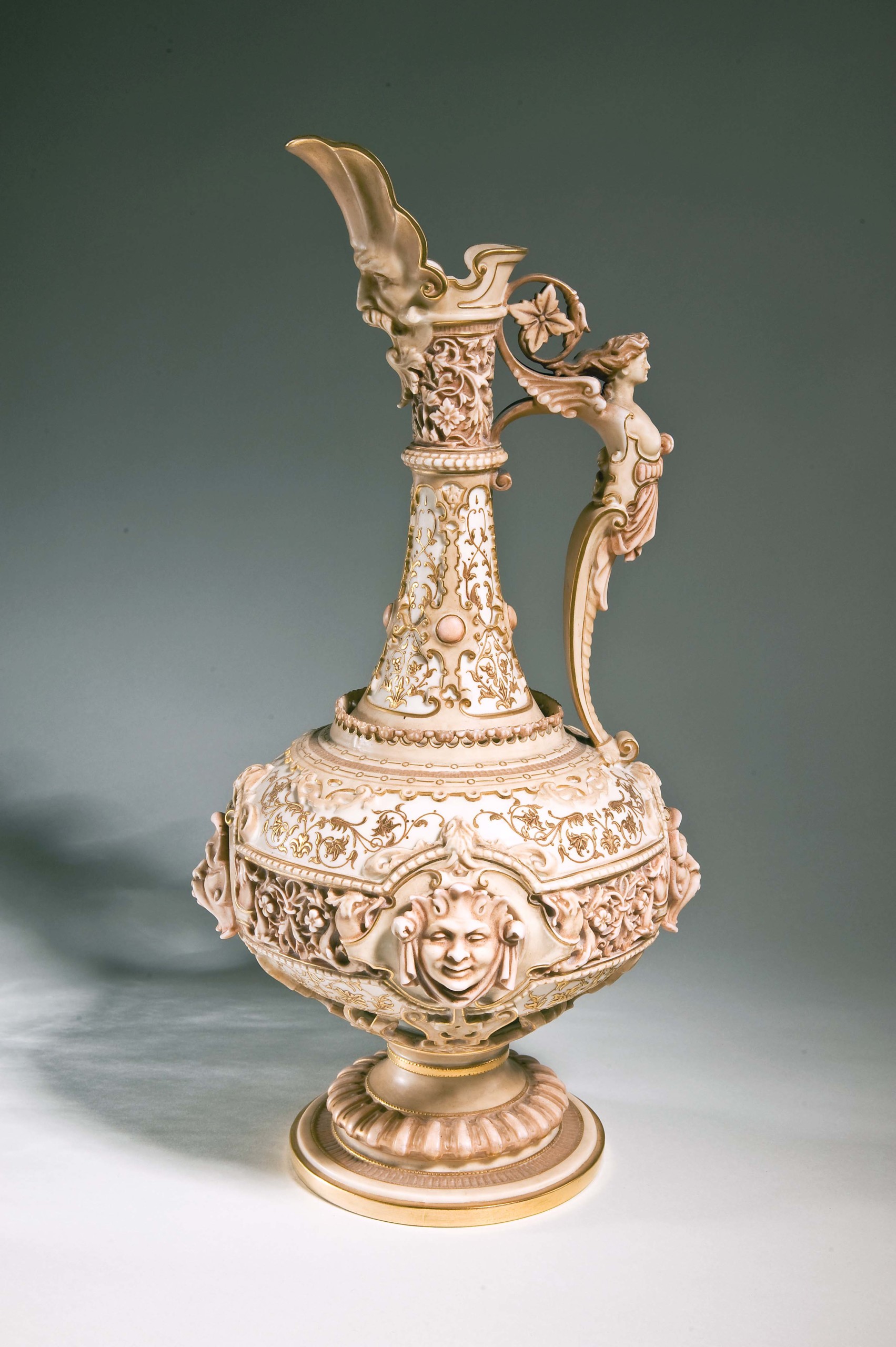
Ewer, Worcester Royal Porcelain Co Ltd, Worcester, England, 1887, glazed porcelain, 15¾ by 8 by 8 inches. The Charles Hosmer Morse Museum of American Art (14014).
By Karla K. Albertson
WINTER PARK, FLA. — Current taste looks upon “clutter” as if it were a bad thing. Call in the feng shui expert. Label friends as “hoarders” if they gather more than two identical objects. Collectors know better, of course, and museums are filled with the fruits of their labors.
“Fascinating Clutter: American Taste during the Reign of Victoria,” the ongoing exhibition of more than 100 objects at the Charles Hosmer Morse Museum of American Art, celebrates an era when many parlors and dining rooms became personal museums. The art, memorabilia, furniture and fabrics served as testimonials to the owners’ interests, erudition and travels. Visitors were immediately oriented to the family by the décor. From the sideboard of a mansion to the mantel of a cottage, abundant display was encouraged.
There are half a dozen themes explored in the show, from “Expansionism” to “Aestheticism.” Personal taste comes up in the section on “Identity:” “Complicated furnishings embellished with identifiable historical themes communicated the status in which the homeowners held themselves…Sparce [sic] rooms indicated a lack of means or sophistication, while filled spaces demonstrated the homeowner’s broad curiosities and offered an array of discussion topics.”
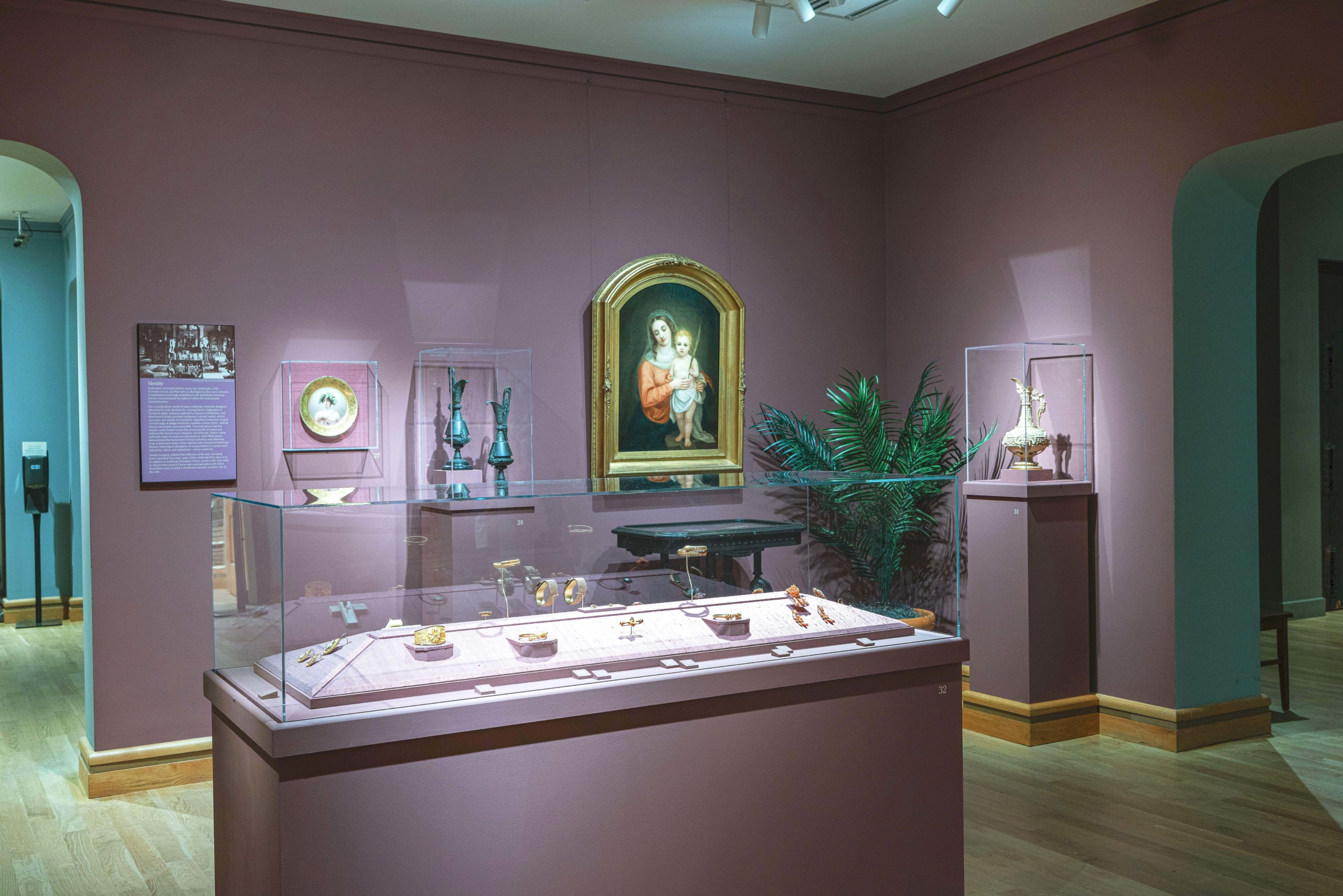
Gallery image of the Morse Museum’s “Fascinating Clutter: American Taste during the Reign of Victoria” exhibition. The Charles Hosmer Morse Museum of American Art.
Too often furniture, such as sideboards and display cabinets, are now seen on the auction floor, stripped of their natural “foliage.” Fortunately, we have period photographic images and paintings that offer an accurate view of Victorian decoration in situ. Note in the exhibition: a photograph of the dining room in the Kemp house on Fifth Avenue, circa 1879-81; also “The Visit” by Arthur Ignatius Keller, circa 1900-110, a watercolor of two chatting women immersed in the clothes and clutter of the period.
Jennifer Perry Thalheimer, the museum’s director and chief curator, spoke to Antiques and The Arts Weekly about the origins of the exhibition: “It’s been on my list of things-to-do for probably 10 years now, but it just never really felt like the right time. But I was thinking, so many aspects of this exhibition we can really relate to today. What it must have been like — then — to go through the Industrial Revolution — a whole new era that erased everything that you knew to be true. We’re going through that again now with digitalization, taking things that were creative and making it a different world. Making us almost obsolete. We have a little insight, because the fears and challenges we have today gives us a lens to view what they were looking at in that period.”
The show section “Expansionism” discusses how suddenly railways allowed Americans to span the continent and ships circled the globe, bringing back products from abroad.
The curator continues, “The things that seem old-fashioned now, were revolutionary then. For example, having access to the entire country — coast to coast — through the railroad. The rise of the middle class as a market for goods. They were making their own wealth, they suddenly could buy their own objects and produce their own materials. We reinvented the world. Each one of these sections of the exhibition you can weave into what we are confronting today.”
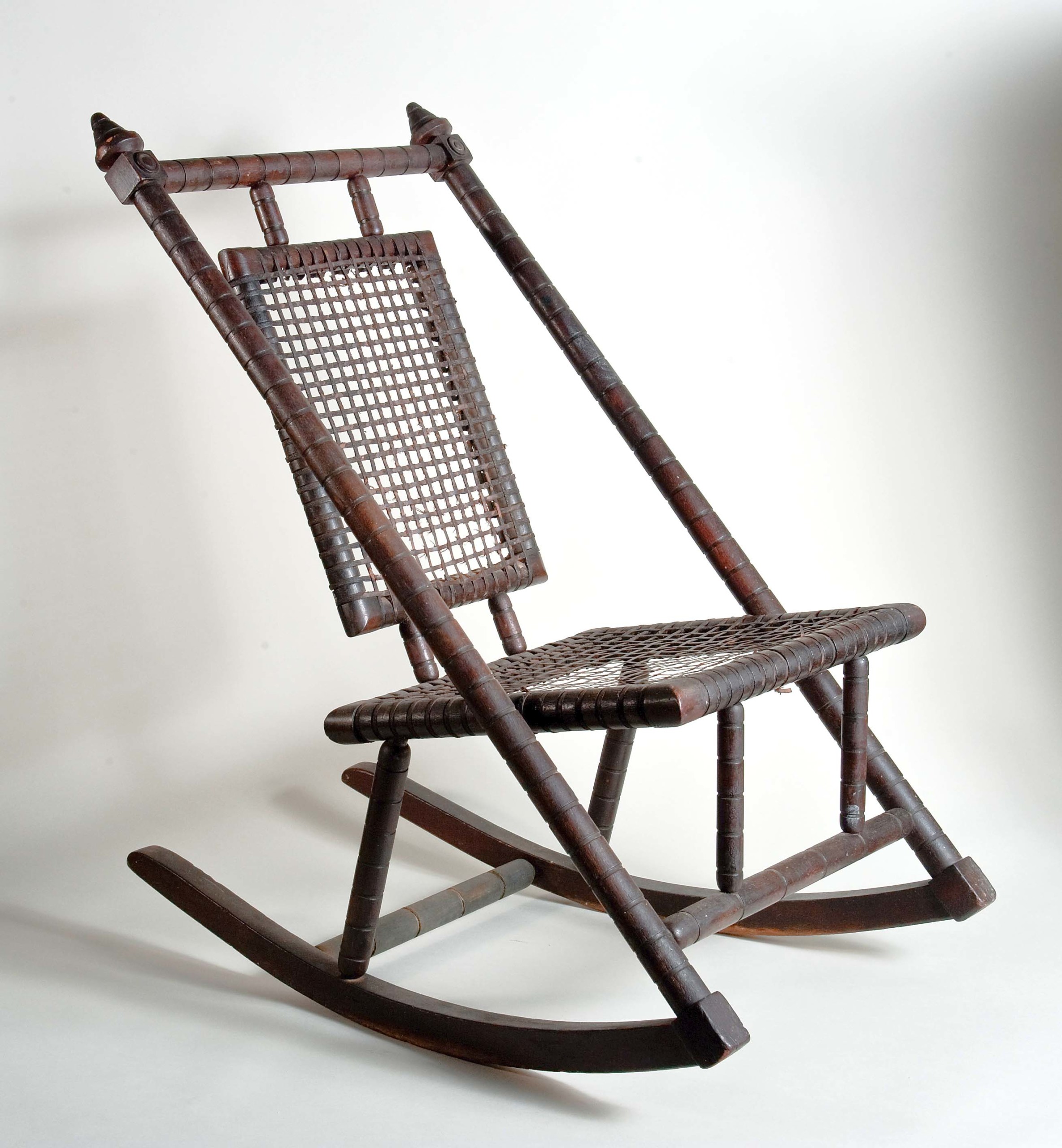
Rocking chair by George Jakob Hunzinger (German/American, 1835-1898), after 1876, walnut, fabric covered steel mesh, 41 by 21 by 21 inches. The Charles Hosmer Morse Museum of American Art (2023-005).
“We have a Hunzinger piece of furniture that is mass-produced and just put together. While that’s not assemble-it-yourself, it’s not the hand-wrought furniture of the past. Things could be made efficiently and inexpensively so everybody could have them. That’s when that idea came to the fore.”
Undoubtedly, the iconic figure of this period is Queen Victoria. While not exactly a feminist icon, a woman came to the throne after a string of Georges — and she stayed there a very long time. What she did, wore and ate was news. It traveled slower than reality television, but if the queen set the fashion, it spread. (Christmas trees, everyone.) She also spurred interest in international style through the 1851 Great Exhibition of the Works of Industry of All Nations. After the Crystal Palace, other countries followed with expositions of their own.
Sadly, Victoria takes a central role in the section, “Mourning.” When her husband Albert died in 1861, America was entering into a Civil War which would lead to the loss of many family members. On display are examples of jewelry designed to commemorate the departed, and the queen wore black to the end of her reign.
While the show contains a variety of furniture and decorative arts, “Mourning,” and “The Grand Tour” also display examples of jewelry in historical styles. An excellent example is an Etruscan Revival bracelet terminating in lions’ heads, which was made in America in 1881, based on an ancient example acquired by the Metropolitan Museum in 1875.
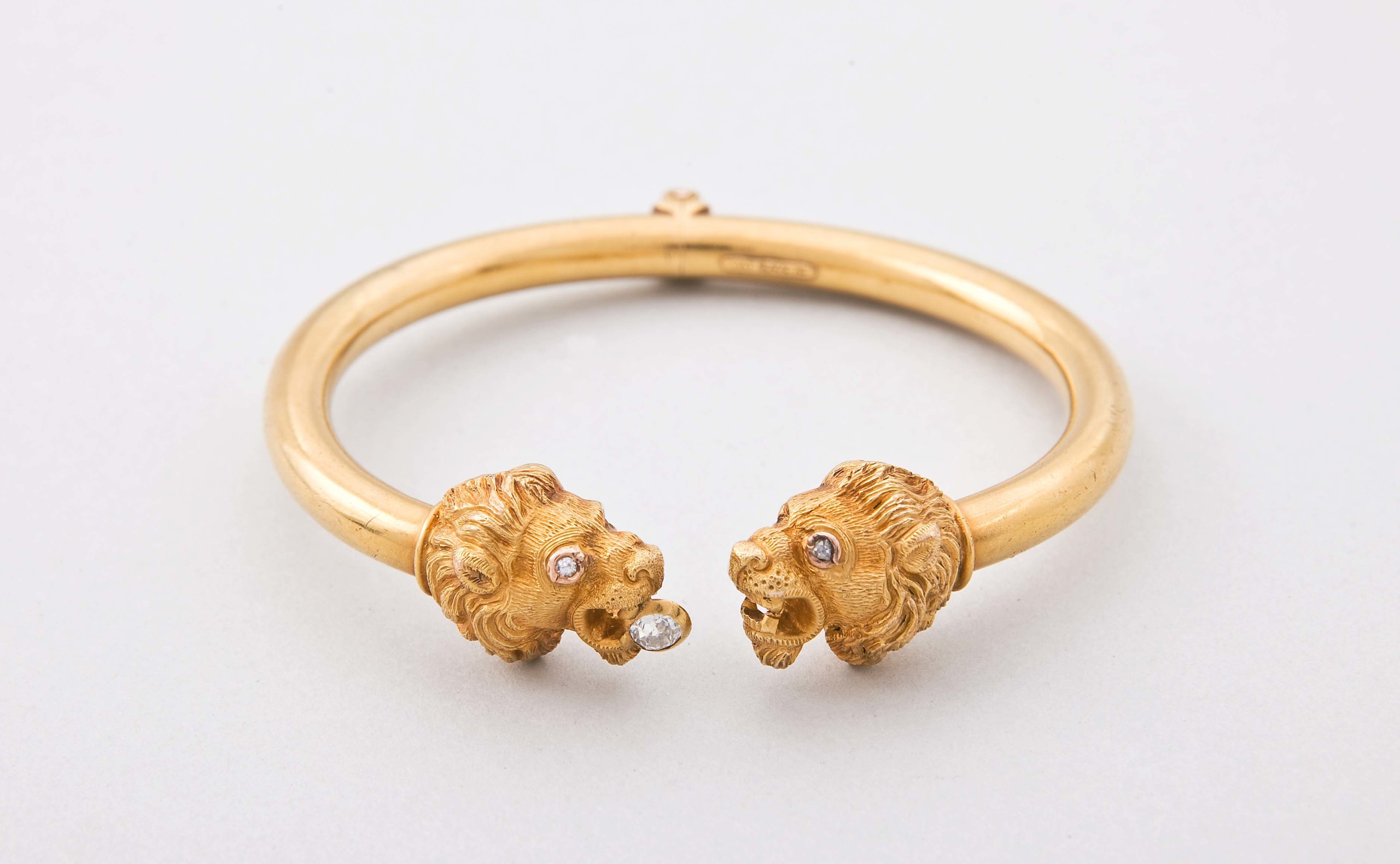
Bracelet attributed to jeweler Charles E. Mason (American, 1847-1922), 1881, gold, diamonds, 2½ by 2¾ inches. The Charles Hosmer Morse Museum of American Art (2013-005:156).
Thalheimer explained that the Aesthetic Movement had an answer to grief: “Let Art be beautiful, something that transports you out of all that. Beauty can transform your life. Magazines came out with idealized interiors that gave people something to hope for. That’s where Aestheticism comes in.” Beauty was not only for the wealthy; everyone could have aspirational bright spots on the mantel or sideboard.
In that section’s introduction, visitors can see the beginnings of a more modern twist on decorating: “An artful interior included both machine-made and handcrafted materials and was free from moralizing responsibilities. The fruits of industry, chemistry, travel and tradition co-mingled to form designs as unique as the creator…”
“New publications featured the homes of America’s elite, allowing a public glimpse into the work of premier designers like Herter Brothers and Louis Tiffany. Victorian middle-class homes echoed the tastefully decorated interiors with collections that simultaneously signaled the homeowner’s sophistication and soothed one’s soul.”
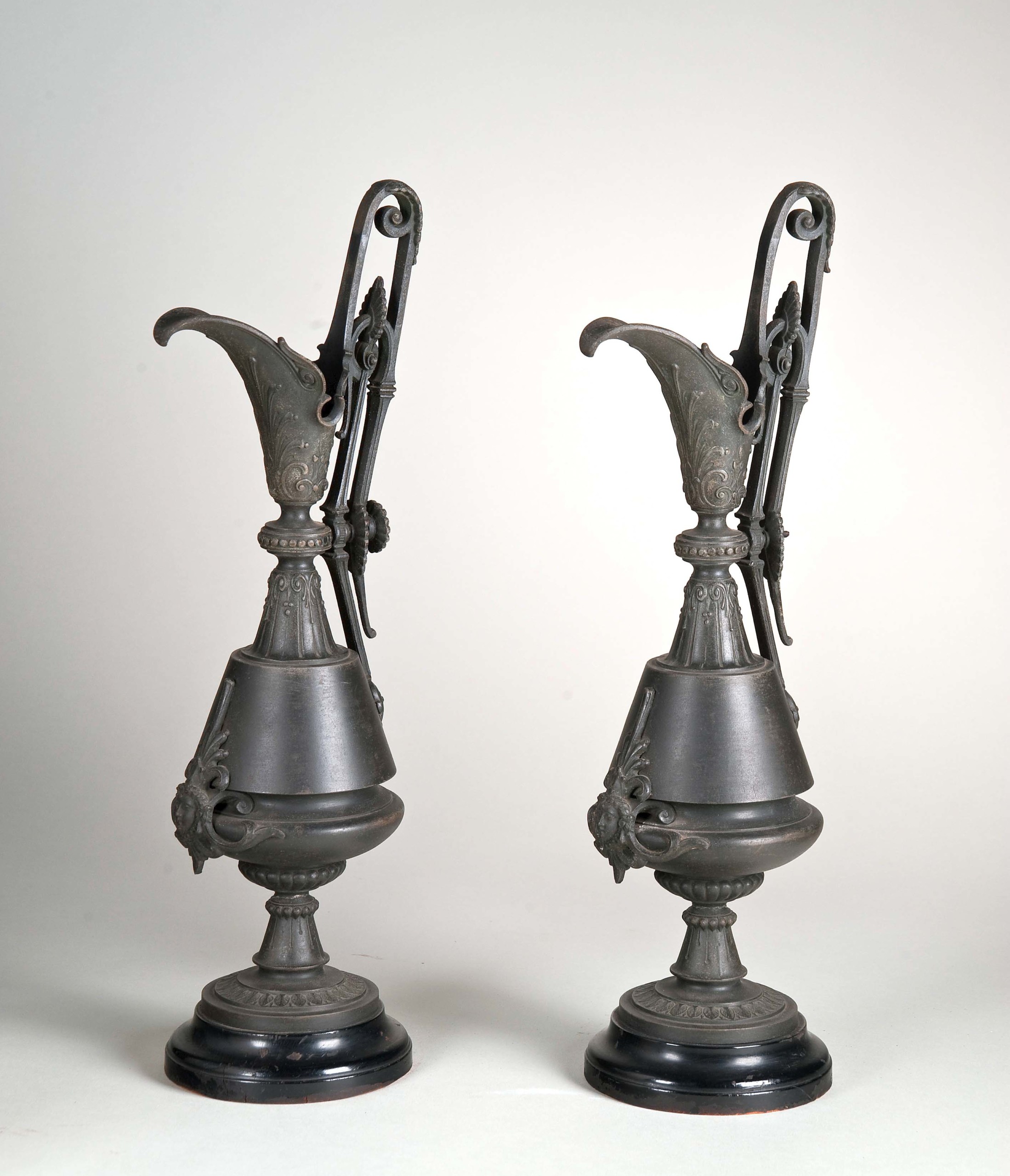
Pair of mantel ewers, unknown American maker, circa 1875, spelter, wood, 17 inches tall. The Charles Hosmer Morse Museum of American Art (2023-010:1,2).
In conclusion, Thalheimer explained that “Fascinating Clutter” offers many revelations: “When you hear ‘Victorian,’ open up your mind, because it’s not just a term you think you know. You’ll see something, label it Victorian, but not understand why it’s that way. There are a lot of themes in here, and a lot going on, but I think there’s something that everybody can relate to.”
“It’s interesting to see people go through the show. They come in, then head in their own direction — they’re all drawn to different things. And they understand how dynamic that was in the time period. No matter what your interest is, there is something in here that you will go, ‘Yes, that makes sense. I didn’t think about it like that.’”
Anyone unfamiliar with the permanent collection of the Charles Hosmer Morse Museum of American Art should immediately click on that tab at www.morsemuseum.org. The museum has so much Tiffany that it dazzles, including the Tiffany Chapel, circa 1893, from Laurelton Hall, as well as a fine collection of American art pottery. Better still, plan a visit because “Fascinating Clutter” and other exhibitions will be on view for long runs.
The Charles Hosmer Morse Museum of American Art is at 445 North Park Avenue. For information, 407-645-5311.




















